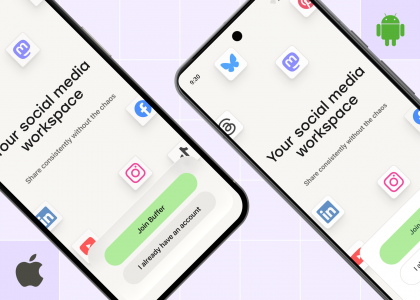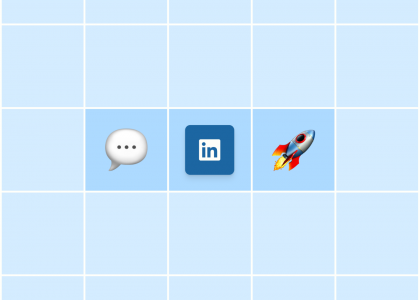I went from occasional AI user to power user in months. How? My mindset for how to approach AI evolved. Now, I reach for AI every day.
I once read that professionals aren’t going to be replaced by AI, rather, they will be replaced by other professionals who use AI. This idea that someone who leverages AI will perform better at their work is now supported by research.
Harvard Business School published a paper where they compared a group of consultants using AI to another group that wasn’t using AI. The results speak for themselves. The group of consultants using AI completed 12.2% more tasks and completed those tasks 25.1% more quickly. Beyond that, their work was 40% higher quality than the non-AI group.
Knowing the benefits that others had seen using AI motivated me to incorporate AI into my own workflows. It took a few months for me to gradually figure out when AI could help me but as I did, I’ve felt the improvement in the speed and depth of my own work now that I leverage AI more regularly.
In this post I break down exactly how I leverage AI daily — no prompts, just mindset shifts that transformed my work.
A quick look at tools
There are a ton of AI tools out there. I won’t attempt to list them all. For those curious about what I use when I mention working with AI, I use Claude by Anthropic about 80% of the time.
I find Claude gives in-depth answers and often understands what I’m asking for the first time. The other 20% of the time, I use ChatGPT. I prefer to use AI to collaborate back and forth and have conversations, rather than just generate content for me, which is why I selected Claude. There are plenty of other AI writing tools or AI image generation tools if that’s what you’re looking for.
Using AI to elevate thought processes
Some of the moments where I have learned the most in my career are when I have the opportunity to talk through a problem or plan alongside someone who is willing to challenge my way of thinking and help me rethink it on a new level. This is rare, but wonderful.
Here’s an example. Several years ago, when I first started running Buffer’s blog after previously having been focused on public relations and communications, I was going over my plan with Buffer’s Chief of Staff, Carolyn Kopprasch. My plan was heavily focused on content creation and consistency. I was aiming to get us back to a place where we published multiple posts a week and were creating new content across a wide range of topics.
After I shared my plan, Caro very kindly challenged me to ‘think about results over output.’ I broke out a sticky note, wrote “Results over output!” and stuck it on my monitor. That was my focus from then on. This completely changed my plan. I needed to look at the data, figure out what was resonating, and do more experimenting to get better results.
In five words, Caro helped me completely rethink how I was approaching my content strategy and brought it to a higher level.
Anyone can recreate this kind of thought partnership and have AI challenge them on the way they think and how they approach obstacles and new ideas. Anytime at work you bump into a challenge, your approach isn’t working, or you feel you’re missing something, you can loop AI in and use it as a tool to critique your line of thinking.
Here’s how I do this:
I start by giving AI a lot of context, including everything I’m thinking through and what I know about it so far.I then ask what else AI needs to know from me to provide the best advice (rather than asking for an answer immediately).I’ll answer those questions and tell the AI that I want to be challenged on my thinking and really work through ideas. I’ll often ask AI to act as a coach.
This approach can work for absolutely anything. Have you created a new strategy presentation? You can have AI review it and critique it from different lenses (as a client, as the CEO, etc.).
Shifting my mindset from asking AI for the answer to a problem, and instead asking AI to work with me on thinking through problems, ideas, and concepts, has helped me approach my work on a different level. With this approach, it’s as though I have a coach sitting with me and reviewing everything I work on to look for improvements.
Using AI to overcome friction
Is there anything worse than a blank document? It can feel so daunting.
If I’m working on a piece of writing alongside someone else, I’ll almost always kick off a first draft for them. Even if I know that draft is not right, at least we can both say “OK, we don’t want to do it that way.” And now we know at least one way we don’t want to do something, there are fewer options.
Starting from scratch can immediately stall my momentum or motivation to keep working on a project. Luckily, none of us need to start from scratch anymore.
When I find myself stuck while getting started, I navigate right over to Claude and start explaining what I’m working on. Sometimes, the act of explaining why I am stuck actually helps me get unstuck, and I don’t even use AI. Other times, Claude will start to generate responses for me. From there, I can either disregard all of those because I know I want to go in another direction, or start working with one of the options I’m presented with. I’m no longer starting from zero, and we’ve overcome the hardest bit.
This isn’t only relevant if you write blog posts or articles for your job. There are a lot of times at work when I am writing internal posts for the Buffer team and those can be just as daunting as starting a new blog post.
Often — and this is true for any task — getting started is the hardest part. We all know that starting with a blank page is incredibly difficult. With AI, you essentially never need to start with a blank page.
Start noticing where friction occurs in your workday, and you’ll likely be surprised at how often quickly collaborating with AI can help you get unstuck and move forward.
Using AI to brainstorm
Sometimes, while I’m working on a project, I’ll start to question if what I’m saying even makes sense. Or I find myself wondering why something I did at work was either successful or it failed and I want to talk it out. In those moments, I can jump into a conversation with AI and immediately have a brainstorming partner.
The other day, I spent some time really digging into synonyms and antonyms for some website copy. It was so useful to have such a fast back-and-forth with a partner that has endless ideas so long as you keep asking questions.
There are a variety of ways to brainstorm using AI, here are a few that have worked well for me:
Connect ideas: Share your main idea, work alongside AI to branch out into themes related to those ideas, continue branching out. (Similar to mind mapping.)Chain thinking: Start with a broad topic and then use each AI response to dive deeper. Keep prompting “What else?” or “Can you elaborate on X?” to explore more deeply.New perspectives: Ask AI to analyze something from different viewpoints (as the customer, as your manager, etc.).Reverse engineering: One fun exercise is to share an example from your work — either a successful one or a failure — with AI, and then ask AI to break down why it worked or didn’t work.Reframing: You can share ideas or problems with AI and ask AI to reframe it in multiple ways.
This works across the board. I’ve used this to think through campaign ideas, angles and messaging, to brainstorm and adjust specific lines of copy, and even to spot gaps in our content strategy.
Using AI as an editor
Finally, one of the ways I’ve most enjoyed using AI as someone who writes a lot is as an editor.
Having an AI editor available 24/7 has completely transformed how I approach writing — and not just for public-facing content. I’ve started running almost everything through AI, from internal team updates to important emails, because I’ve found it helps me become a clearer, more effective communicator.
What’s particularly great about using AI as an editor is that it can wear multiple hats while editing — it can be your reader, spot holes in your logic, flag confusing sections, and suggest ways to make your message stronger.
You can also create an editing style-guide or checklist (with help from AI) and then have AI use that checklist as a reference when editing your pieces.
Some helpful questions you can ask AI when sending over a piece of writing are:
What about this is confusing?Where could I add more context?What questions would you have after reading this?
It’s amazing how often AI spots gaps in my explanation that I completely missed.
AI is also particularly strong at condensing text. We all tend to be a bit wordy in our first drafts (I’m definitely guilty of this!). I’ll ask AI to shorten a piece of writing while keeping my voice and tone the same and I’m often very happy with the results.
It’s safe to say I’m really enjoying this new way of using AI in my work.
At the same time, AI naturally has limits. Sometimes I feel like a discussion is going in circles or I’m not asking the right questions because I’m too close to the problem. I also might not have all the information if a problem involves other teams with different goals.
All that to say, I still seek and value feedback from my human colleagues who know my work well and can continue to challenge me and collaborate with me. I balance using AI in this way alongside asking others on my team for feedback and reflecting on my own.
I hope my approach to AI can be useful for others trying to incorporate AI into their workflows. I’d love to hear how you’re using AI at work — leave a comment below ⬇️






